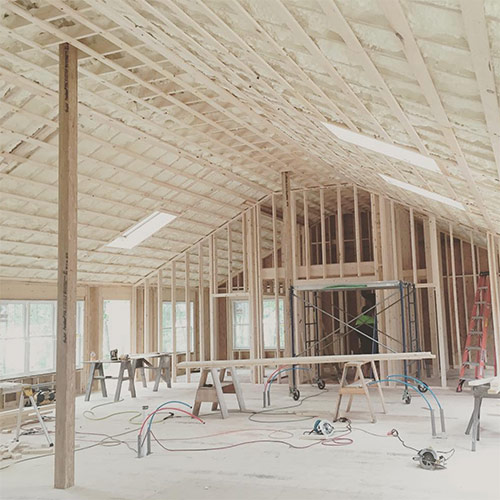Are you wondering how much air leakage should be acceptable in your house? Proper insulation and sealing are essential for maintaining an energy-efficient and cozy home.
In this post, we’ll dive into the world of house air leak detection and find out just how crucial it is. We’ll also discuss the steps to identify and address those pesky air leaks in your Maine house.
Understanding Air Leakage
House air leakage occurs when outdoor air sneaks in through gaps, cracks, and openings in your home’s structure. While a bit of fresh air is good, excessive air leakage can lead to energy waste, discomfort, and higher energy bills. It can even allow unwanted moisture and pollutants into your home.
Recommended Levels of Air Leakage
Professionals use something called Air Changes per Hour (ACH) to measure the amount of air leakage in a house. ACH tells you how many times all the air in your home is replaced in an hour. The recommended ACH levels depend on factors like where you live, the size of your home, and local building codes.
In moderate climates, like many places in the United States, the ideal ACH range is between 0.25 and 0.40. Achieving these levels can save energy and keep your indoor environment comfy.
Did you know that since 2012, the International Energy Conservation Code (IECC) has required residential construction to pass an air leakage-rate test? In Maine, we aim for three air changes per hour (3 ACH50) at a test pressure of 50 pascals. This test ensures that homes are airtight, cutting down on energy loss and boosting efficiency.
But here’s the catch: older homes might have more natural ventilation due to their construction or lack of insulation. In such cases, it might be time for a pro to assess and retrofit your home for improved energy efficiency and comfort.
How to Find and Fix Air Leaks
Now, let’s talk about how to find air leaks in your home.
- Start by checking common culprits like windows, doors, and the attic.
- Feel for drafts on a windy day or use a smoke pen to spot air movement.
- You can also perform a blower-door test, which involves pressurizing your home to find hidden leaks. While this test is best left to professionals, it’s a surefire way to pinpoint air leakage.
Once you’ve identified the leaks, seal them up with caulk, weather-stripping, or insulation. Don’t forget to insulate your attic and walls, too – it makes a big difference.
Reducing air leakage not only keeps your home cozy and energy-efficient, but also improves indoor air quality. By aiming for the recommended ACH levels and getting professional help when needed, you’ll enjoy a comfy living space while reducing your energy use and environmental impact.
So, whether you’re building a new home or improving an older one, make sure to pay attention to those sneaky air leaks. Your wallet and the environment will thank you! If you’re ready to learn whether your home is ready for a blower-door test, get a free quote from Seal It Insulation Systems today!











